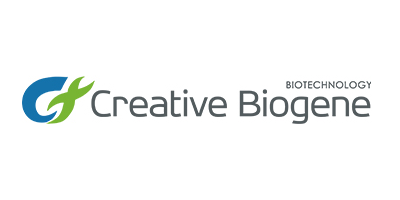

- Home
- Companies
- Creative Biogene
- Articles
- Single-Domain Antibody Production: A ...
Single-Domain Antibody Production: A Comprehensive Overview
Single-domain antibodies, also known as nanobodies or VHH antibodies, are a unique class of antibody fragments derived from the immune systems of camelids, such as llamas and alpacas. These small yet robust molecules present significant advantages in various applications, from therapeutics to diagnostics. This article explores the process of single-domain antibody production, its benefits, and its wide-ranging applications.
What Are Single-Domain Antibodies?
Single-domain antibodies consist of a single polypeptide chain that retains the ability to bind specifically to antigens. Unlike traditional antibodies, which are composed of heavy and light chains, these smaller fragments are typically around 15 kDa in size. Their unique structure allows them to access challenging targets that conventional antibodies cannot, including hidden epitopes and conformational structures on proteins.
Advantages of Single-Domain Antibodies
Size and Specificity: Their small size enables them to penetrate tissues more effectively and reach targets that larger antibodies cannot. This characteristic enhances their specificity and affinity for antigens.
Stability: Single-domain antibodies are highly stable under various environmental conditions, including extreme pH and temperature. This stability makes them suitable candidates for therapeutic use and allows for diverse storage conditions.
Ease of Production: The production of single-domain antibodies is more straightforward than that of traditional antibodies. They can be produced in microbial systems such as yeast or bacteria, which reduce the complexity and cost associated with mammalian cell culture.
Reduced Immunogenicity: Due to their smaller size and unique structure, single-domain antibodies tend to elicit a lower immune response in humans, making them safer for therapeutic applications.
Production Process of Single-Domain Antibodies
1. Immunization
The first step in the production of single-domain antibodies is the immunization of a camelid (e.g., llama or alpaca) with the target antigen. The animal’s immune system will produce a diverse array of antibodies in response to the antigen.
2. Library Construction
Following immunization, B-cells are isolated from the animal’s blood. These B-cells are then used to construct a phage display library, which contains a vast diversity of single-domain antibody fragments. The library is created by cloning the VHH domain genes into phage vectors.
3. Screening and Selection
The phage display library undergoes several rounds of panning to selectively enrich for those single-domain antibodies that have the highest affinity for the target antigen. Biopanning involves exposing the library to the antigen immobilized on a solid surface, allowing only the bound phages to be eluted and amplified.
4. Characterization
After selection, characterized clones are further analyzed for their binding affinity, specificity, and stability. Techniques such as ELISA, surface plasmon resonance, and Western blotting are commonly used to evaluate these parameters.
5. Expression and Purification
Promising candidates are expressed in a suitable host system. The single-domain antibodies are purified through affinity chromatography, which exploits their specific binding to the antigen or an engineered tag.
6. Functional Validation
Finally, the purified single-domain antibodies undergo functional validation to ensure they possess the desired biological activity. This step is crucial for confirming their utility in research or therapeutic applications.
Applications of Single-Domain Antibodies
Single-domain antibodies have a wide array of applications across multiple fields:
Therapeutics: They are being explored as potential treatments for various diseases, including cancer, infectious diseases, and autoimmune disorders, due to their ability to specifically target antigens.
Diagnostics: Their high specificity and stability make them ideal candidates for diagnostic assays, including imaging and biosensors.
Research Tools: Researchers utilize single-domain antibodies in various applications, such as protein purification and label-free detection systems, due to their ability to bind specific targets with high affinity.
Targeted Drug Delivery: Their small size allows them to be conjugated with drugs or therapeutic agents for targeted delivery, enhancing treatment efficacy while minimizing side effects.
Conclusion
Single-domain antibodies represent a significant advancement in antibody technology, offering unique advantages for research, diagnostics, and therapeutic applications. As our understanding of their properties and production processes continues to evolve, the potential for these remarkable molecules will undoubtedly expand, leading to new and innovative solutions in biomedicine. Their versatility, stability, and specificity position them as a promising alternative to traditional antibody formats, paving the way for future developments in antibody-based therapies.
